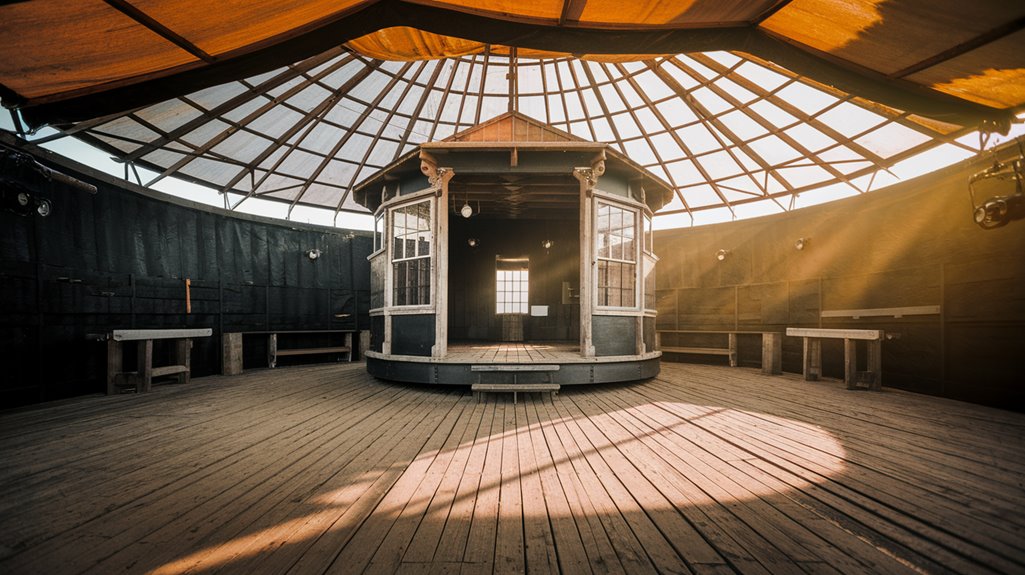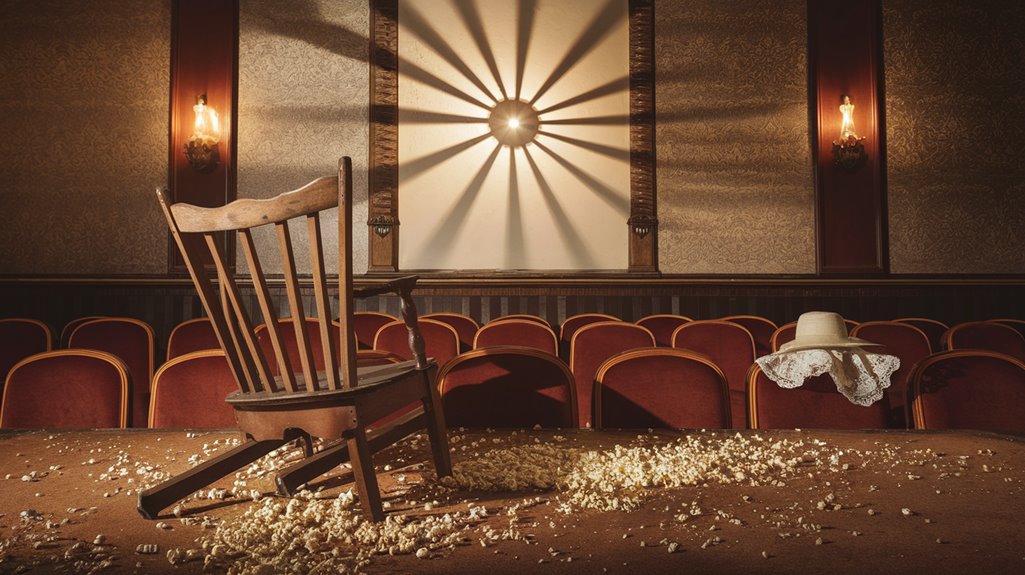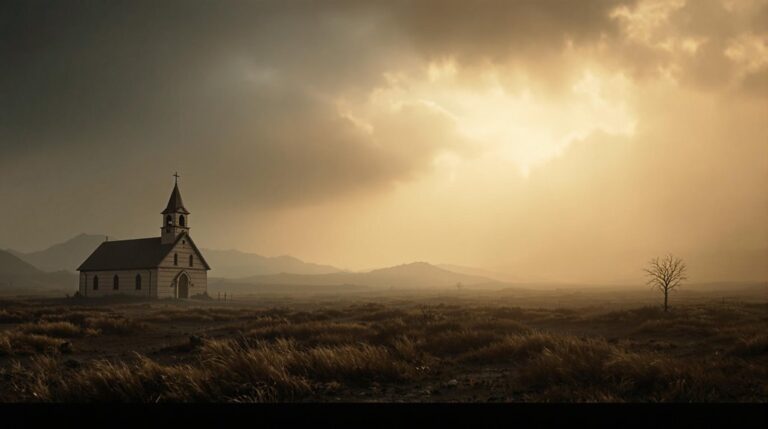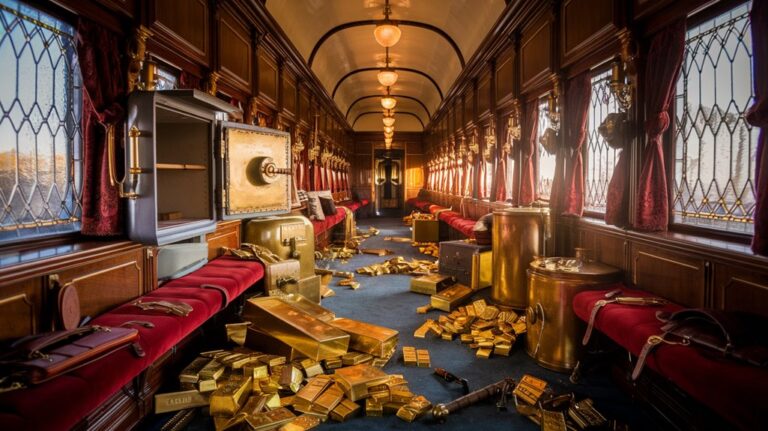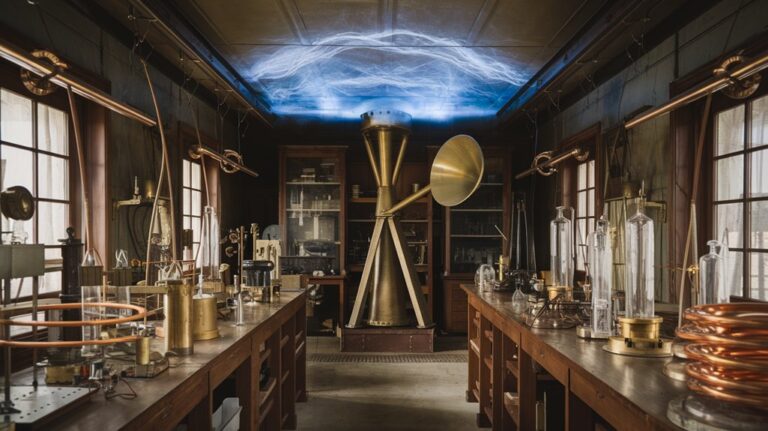The Murder That Almost Ended Movies Before They Began
In 1895, Thomas Edison's film studio produced "The Execution of Mary, Queen of Scots," featuring the first death scene ever captured on camera. You'd think audiences would've been prepared, given their appetite for violent theater productions, but this new medium crossed an unexpected line. The stark realism of the beheading, achieved through clever stop-motion, didn't just shock viewers—it sparked a moral panic that threatened to destroy the entire film industry before it could truly begin. What followed would forever change how we tell stories on screen.
The Birth of Cinematic Violence: Dickson's "Rat Killing" Legacy
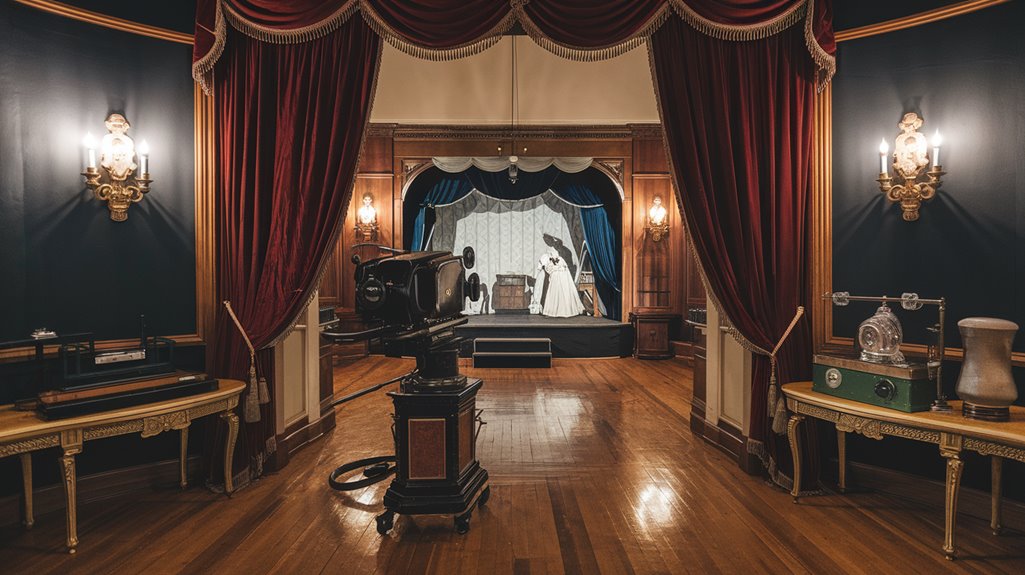
When William K.L. Dickson filmed "Rat Killing" in 1894, you wouldn't have known you were witnessing the birth of cinematic violence. As one of Edison Manufacturing Company's first ventures into controversial content, this blood sport film challenged what would become cinematic ethics by showing a terrier killing multiple rats. The film completed its grim showcase in 52.5 seconds flat.
You can trace modern debates about animal rights in film back to this production, where handlers allegedly abused animals to achieve desired shots. Today's movies show that violent content has only increased, with research showing violent dialogue increasing across all film genres over the past fifty years.
While the film itself hasn't survived due to nitrate degradation, its impact resonates through cinema history. It spawned several sequels, including the unreleased "Rats and Weasel," where the predator became prey.
Dickson's work laid the foundation for future controversial films, like 1903's "Electrocuting an Elephant," establishing a complex relationship between entertainment and ethical boundaries in filmmaking.
When Horror Met Hollywood: The First On-Screen Murder
Back in 1895, you'd find yourself witnessing cinema's first staged murder in "The Execution of Mary, Queen of Scots," though not quite as gruesome as modern standards might suggest.
Thomas Edison's production company pioneered this groundbreaking moment using clever cinematic techniques, specifically stop-motion substitution where they swapped the actor with a dummy for the beheading scene. A male actor in drag played the role of Mary, making it one of film history's earliest examples of cross-dressing performance.
While historical reenactments like this aimed to educate rather than shock, they sparked a revolution in how filmmakers approached on-screen death. The true landmark of cinematic murder would come in The Great Train Robbery of 1903, which featured multiple violent deaths in its 12-minute runtime.
You can trace the evolution from these primitive special effects to the graphic violence that emerged in the 1950s with color film.
Though primitive by today's standards, this first filmed execution laid the foundation for decades of innovation in depicting on-screen murders, ultimately shaping how we experience cinematic violence today.
Public Outrage and Early Film Censorship
As movies grew increasingly popular in the early 1900s, public concern over their moral influence sparked a wave of censorship across America. Public sentiment turned against films that pushed moral boundaries, leading to intense censorship debates at local and state levels.
The state of Maine took the first action against controversial films when it enacted a law prohibiting prizefight films in 1897. By the early 1930s, one-third of American moviegoers lived in areas with official censorship boards.
You'll find that early film regulation emerged through these key developments:
- Chicago established the nation's first local censorship board in 1907.
- Pennsylvania created the first statewide censorship board in 1911.
- The Supreme Court validated state film censorship in 1915.
- By the 1920s, over 100 cities had their own censorship boards.
The film industry, hoping to avoid federal regulation, responded by creating the MPPDA in 1922.
Under Will Hays's leadership, they developed self-regulatory measures like the Production Code, which would shape Hollywood's content for decades to come.
Behind The Hays Code: A Nation Grapples With Movie Violence
Though public outrage over film content had simmered for years, the creation of the Hays Code in 1930 marked Hollywood's most dramatic attempt at self-regulation. Under Will H. Hays' leadership, the film industry established strict guidelines to appease mounting censorship debates and align with America's moral standards.
The development of these standards started when nearly 100 censorship bills emerged in 1921, pushing the industry toward self-regulation. Recent studies show that violent language has steadily increased in films since these regulations ended.
You might be surprised to learn that the Great Depression played a vital role in the Code's enforcement. Studios, financially vulnerable during these tough times, couldn't risk boycotts from powerful groups like the Legion of Decency.
When Joseph Breen took charge in 1934, the Code's grip tightened further. Everything from violence to suggestive content faced rigid scrutiny. Even Hitchcock's "Rebecca" required plot changes to secure approval.
Studios began submitting scripts early, knowing the MPPDA seal was essential for box office success.
Pioneering Special Effects: How Early Murder Scenes Changed Film
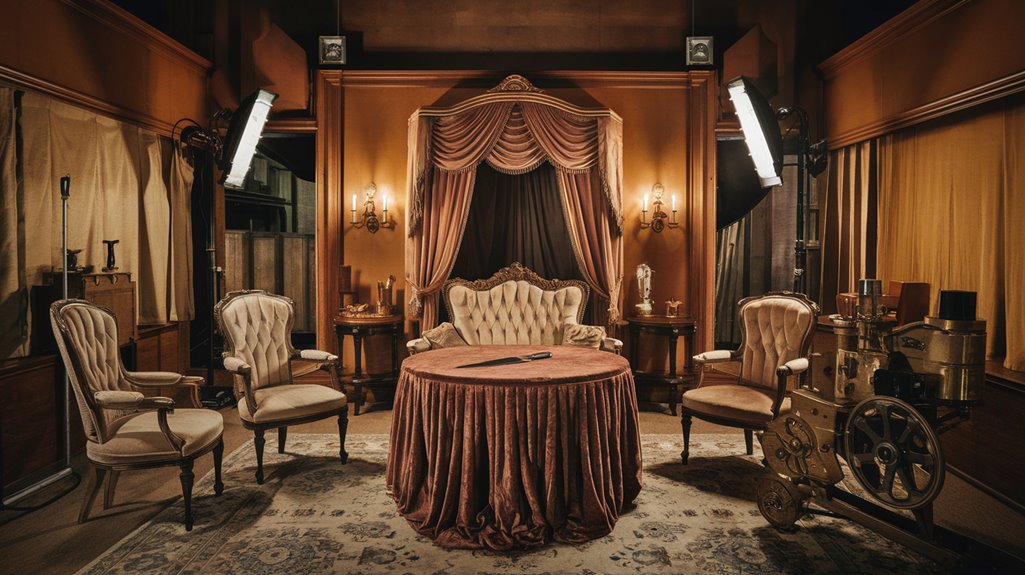
Long before the Hays Code restricted on-screen violence, filmmakers pioneered groundbreaking special effects to portray death in cinema.
You'll find that early pioneering techniques emerged in films like "The Execution of Mary, Queen of Scots" (1895), where editing innovations transformed a simple mannequin swap into cinema's first human death scene.
These groundbreaking developments laid the foundation for modern filmmaking:
- The first on-screen kill in 1894 featured a real rat terrier, setting the stage for future violence.
- Splicing techniques created seamless changes for death scenes.
- Documentary-style vignettes pushed boundaries of acceptable content.
- Educational films used historical violence to inform audiences.
These early experiments with special effects and editing would shape how filmmakers approached death scenes for generations to come.
From Silent Screams to Modern Cinema: The Lasting Impact
When silent films first tackled murder and violence on screen, they sparked a cultural revolution that would forever change cinema. Through silent storytelling, directors like Hitchcock pioneered techniques that would influence generations of filmmakers, particularly in "The Lodger" (1927). Early filmmakers relied heavily on off-screen murder scenes to convey violence while maintaining audience sensibilities.
You can trace today's psychological thrillers and crime dramas directly back to this cinematic evolution. After the Fatty Arbuckle scandal, the industry established the Hays Code to regulate film content and preserve public morality. As films evolved from simple gangster narratives to complex explorations of criminal minds, they faced intense scrutiny from censorship boards at both national and local levels.
This creative tension between artistic freedom and societal standards fostered innovation, forcing filmmakers to develop subtle ways to convey violence and suspense. The groundwork laid during this era still shapes how modern directors approach murder on screen, from character development to visual storytelling techniques.

